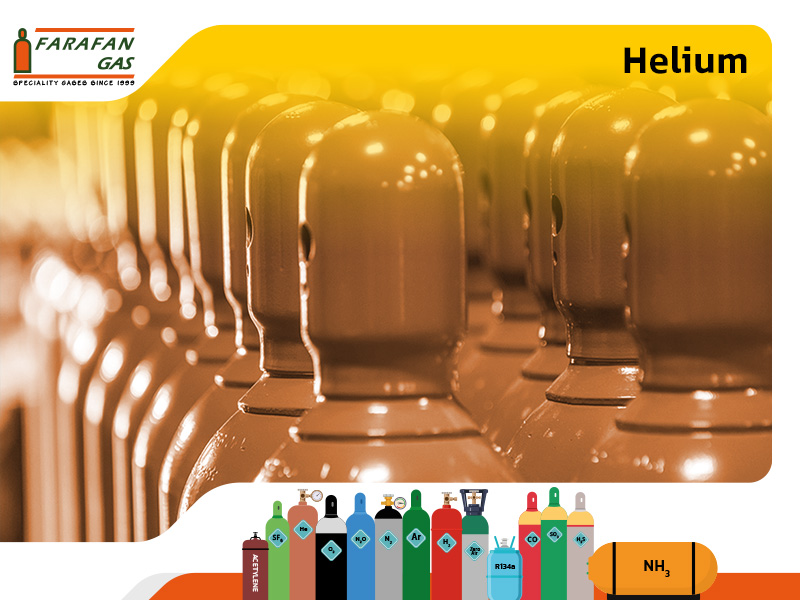History
The first sign of helium was seen on August 18, 1868, as a yellow band 49 and 587 nanometers long in the Chromosphere spectroscopy of the sun. The yellow line was identified by French astronomer Jules Jansen during a total solar eclipse in Gondor, India, and was thought to be related to sodium. In October of that year, the English astronomer Norman Laker found a yellow bar in the spectrum of sunlight, calling it the Franhofer D3 bar. He speculated that the line must have been created by an element within the sun that is unknown on Earth. Lacquer and English chemist Edward Frankland chose the Greek word helios, meaning “sun,” for this element. In 1882, the Italian physicist Luigi Palmeri first identified helium on Earth.
Safety and classification
Helium is a non-flammable and non-toxic gas and is asphyxiant in high concentrations, due to lack of Oxygen.
Sources
The primary source of helium is from natural gas wells. It is obtained by a liquefaction and stripping operation.
Applications
- Helium is inert and the least soluble of all gases in liquids and is therefore used as a pressurization gas for:
→ cryogenic rocket propellants in space/missile applications
→ heavy water in nuclear reactors
→ for all liquids at room or low temperatures.
- Helium is added to neutral atmospheres, e.g. in heat treatment applications requiring a protective atmosphere.
- Helium is used extensively in the welding industry as an inert shielding gas for arc welding. It is also used in conjunction with helium (“leak”) detectors to test the integrity of fabricated components and systems.
- Various mixtures of helium and oxygen are used as breathing gases for divers who must work at great depths and therefore high pressures. The use of helium to dilute the oxygen instead of nitrogen, as in air, prevents nitrogen being dissolved in the blood, which is the cause of nitrogen narcosis (also known as “bends”).
- Helium is used to fill large balloons for upper atmosphere and cosmic ray studies. Small helium balloons are used by weather forecasters to carry meteorological instruments.
- Due to nonflammability and low density, this gas is ideal for filling toy balloons (in mixtures with nitrogen), airplane tyres, advertising blimps, geostationary balloons (certain projects are under way for the realisation of balloons designed to serve as television transmission and observation relays).
Tehran Farafan Gas supplies Helium gas in balloon grade, 99.999% and 99.9999% according to the needs of customers, in 2 to 50 liter cylinders, etc.

